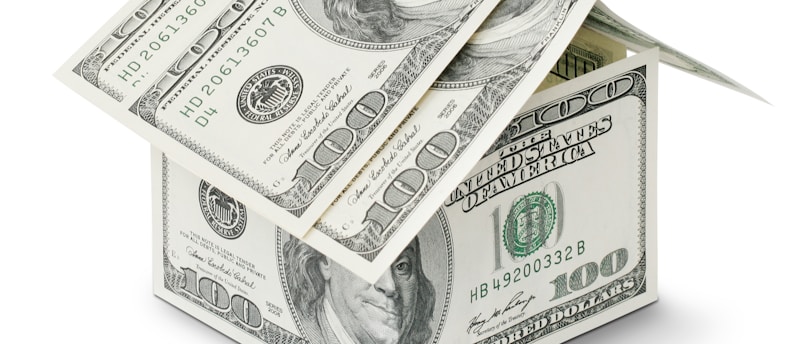Use Desktop for Better Experience
Product Recall Insurance: Turning a Potential Catastrophe into a Contained Event
FINANCIAL
Ryan Cheng
6/13/20254 min read
Mention “product recall” in any boardroom and you will see otherwise calm executives break into a cold sweat. The reason is simple: recalling a defective or contaminated product can be ruinously expensive. It drains cash, erodes customer trust, disrupts supply chains and, in some cases, wipes companies off the map entirely. Dedicated product recall insurance exists to prevent that downward spiral by injecting capital, expertise and structure into an otherwise chaotic moment. Let’s explore how the coverage works, who needs it, and why a specialized policy is fast becoming a non-negotiable part of modern risk management.
What Product Recall Insurance Actually Covers
A common misconception is that a company’s general or product liability policy will cover every financial consequence of a recall. In reality, those policies are written to respond primarily to bodily injury or property damage claims, and they usually grant only a narrow recall “extension” if they address recall costs at all. A stand-alone recall policy is designed from the ground up to indemnify both first-party costs (the expenses you incur directly) and third-party costs (losses suffered by customers or downstream partners that you become legally responsible to pay).
First-party coverage reimburses the nuts-and-bolts expenses that pile up the moment a recall is announced: the drafting of notifications, overnight shipping to pull products off store shelves, warehousing or disposal of contaminated stock, overtime for plant staff, and the cost of manufacturing replacement goods. It can also include business interruption, which is crucial if you must shut down a production line to carry out decontamination or retooling. Equally important—and often overlooked—is crisis management support. Most quality recall policies put crisis-communications and contamination consultants on retainer so that your first phone call is to a veteran problem-solver, not to a Google search box.
Third-party coverage comes into play when your trading partners—the supermarket chains, big-box retailers, or contract OEMs—suffer losses because your product failed. They may claim lost profits, extra freight costs, or even penalties owed to their own customers. Without insurance, you can try to recover those sums from a component supplier or a farmer upstream, but cross-border litigation is slow and uncertain. A recall policy pays those claims promptly and subrogates later, allowing you to protect key relationships and keep your brand’s equity intact.
Why Every Node in the Supply Chain Has Exposure
When the word “recall” appears in the press, most people picture a famous brand or finished-goods manufacturer. In practice, liability can migrate up and down the supply chain. Farmers provide contaminated romaine lettuce, contract packers misprint an allergen warning, distributors fail to maintain refrigerated temperatures, and retailers inadvertently re-label expired stock. Even a commodities trader who never touches the physical product can be dragged into the fallout through contractual indemnities or joint-and-several liability statutes. If your company name appears anywhere in the documentation for an ingredient, a component or a finished item, you are only one DNA test, X-ray or whistle-blower away from a costly recall.
Industry Hotspots: Food, Beverage and Beyond
Food and beverage producers sit at ground zero because the consequences of contamination—listeria in cheese, salmonella in peanut butter, undeclared nuts in an energy bar—can be immediate and severe. Regulators such as the U.S. FDA and USDA do not hesitate to order nationwide recalls, and their counterparts in Canada, the EU and Asia are similarly assertive. Yet the risk profile extends far beyond F&B. Pharmaceutical firms confront mis-dosed tablets or tainted active ingredients. Automotive suppliers risk defective airbags or faulty brake assemblies. Electronics manufacturers may discover overheating batteries that prompt fire hazards. In cosmetics, a pathogenic bacterium in a face cream can trigger regulatory seizure. The industries differ, but the financial math is identical: direct costs rise steeply while revenue plunges, often in a matter of days.
Compelling Reasons to Buy a Stand-Alone Policy
Contractual obligations now top the list of motivators. Major retailers and original equipment manufacturers frequently require proof of recall coverage before they will stock, distribute or private-label your product. Failing to carry the coverage can mean losing shelf space or a hard-won supply agreement.
Government oversight provides a second push. Over the last decade regulators have gained broader recall powers, higher penalty frameworks, and faster laboratory techniques that identify contaminants at the genetic level. They can order a recall first and sort out fault later, leaving your team to foot the bill no matter who caused the defect.
A third driver is the narrow recall extension in traditional insurance programs. Standard commercial general liability policies may include $50,000 or $100,000 for recall expenses—barely enough to cover postage for a nationwide notification, let alone reverse logistics, replacement stock and lost revenue.
Fourth, recovering losses from upstream suppliers is notoriously difficult. Many are small, lightly capitalized or based in jurisdictions with limited legal reciprocity. Even if you win in court years later, the unpaid bills from day one can cripple your cash flow long before judgment is rendered.
Finally, the severity of recall events is escalating as supply chains globalize and social media accelerates public awareness. Six- and seven-figure events are no longer rare; eight-figure catastrophes make headlines every year. Compared with such exposure, annual insurance premiums look modest.
The Added Value of Embedded Consultants
One underappreciated benefit of recall insurance is the ready-made crisis team baked into the policy. Insurers maintain panels of food scientists, microbiologists, mechanical engineers, brand-reputation experts and public-relations strategists who can deploy within hours. They guide you through root-cause analysis, coordinate with regulators, and craft messaging that reassures consumers while meeting legal disclosure requirements.
A Closing Thought
Recalls used to be the misfortune of global conglomerates with household names. Today technology, regulatory reach and consumer expectations have leveled the playing field—small and mid-sized enterprises can suffer identical disasters, sometimes with existential consequences. Product recall insurance transforms a potentially fatal crisis into a survivable incident by funding the immediate response and supplying the expertise to manage it professionally. In a world of razor-thin margins and unforgiving headlines, that safety net is not just a prudent purchase; it is a cornerstone of corporate resilience.
Before you buy, map your supply chain and quantify a worst-case recall scenario in both volume and dollars. That exercise clarifies whether you need a five-million-dollar limit or a fifty-million one, and whether sub-limits for business interruption or consultant costs are adequate. Confirm that the policy covers all territories where your product is sold, because recalls rarely respect borders. Scrutinize exclusions for known defects, gradual deterioration, and cyber-triggered events, and make sure your broker can negotiate extensions where necessary.


